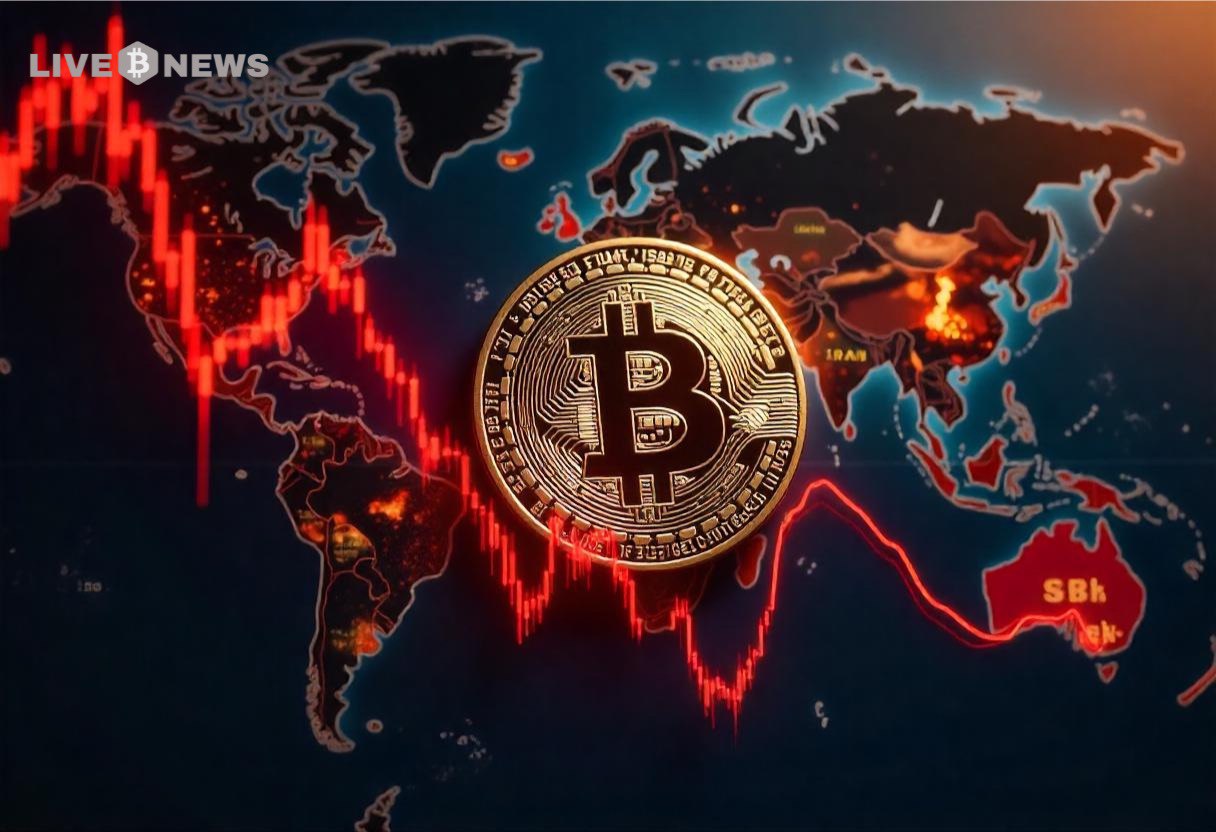Bitcoin nears a potential bottom as its Sharpe ratio hits past-recovery levels and on-chain transfers signal intense market stress.
Bitcoin’s Sharpe ratio has fallen near zero, and many traders are watching this trend closely.
For context, the ratio tracks return versus risk, and a drop to these levels often shows that a market sits at a tense point. Recent data indicates that Bitcoin may be entering a zone last reached during the early stages of past recoveries.
Sharpe Ratio Nears Levels Seen At Past Market Lows
Bitcoin’s Sharpe ratio now sits close to zero. CryptoQuant analyst I. Moreno recently noted that this measurement matches levels seen in 2019, 2020 and 2022 when the market sat in long periods of risk repricing.
Those phases often came before multimonth price growth formed.
For more context, the Sharpe ratio compares return against volatility. This means that a near-zero reading shows that returns have failed to match the size of recent price swings.
The Risk-Reward Setup That Only Appears Once Every Few Years
“The Bitcoin Sharpe Ratio has collapsed back toward the zero line, a level historically associated with moments of maximum uncertainty and the early stages of risk repricing.” – By @MorenoDV_ pic.twitter.com/X5LoLZErmc
— CryptoQuant.com (@cryptoquant_com) November 24, 2025
This can create what analysts see as more favourable environment for price recovery. It is worth noting that this metric does not guarantee a recovery. It simply shows that the market has reached an extreme condition.
Bitcoin’s surge toward a Sharpe ratio of 50 early this year came during its run towards its first move above 73,000 dollars. That level indicated that buyers had pushed the asset into an overheated state.
Soon after this, a pullback occurred and erased the strong reading.
Moreno said that the ratio has not yet confirmed anything yet. It only shows that risk-adjusted conditions are becoming more attractive to investors.
He added that the metric will need to reverse upward before traders feel confident enough to invest.
Large Bitcoin Transfers Signal Heavy Market Stress
Glassnode reported that over 8% of all Bitcoin moved on-chain in the past week. That scale of transfer has only happened twice in the last seven years.
Each time came during periods of heavy stress, including December 2018 and March 2020.
Joe Burnett, director of Bitcoin Strategy at Semler Scientific said the past week ranks among the biggest on-chain events in Bitcoin’s history. He pointed to the size and speed of the transfers as evidence of intense market pressure.
More than 8% of all bitcoin moved in the last 7 days.
The last two times this happened?
1. March 2020 – $5,000 BTC
2. December 2018 – $3,500 BTCThis makes the latest drawdown one of the most significant on-chain events in bitcoin’s history. pic.twitter.com/wOKHTZ7Sia
— Joe Burnett, MSBA (@IIICapital) November 24, 2025
Bitcoin dropped 23% in just ten days, losing more than $24,000 and falling to $82,000 last Friday.
The price recovered to about $89,000 by late Monday and traders say this kind of rapid swing shows that large holders are moving funds during moments of uncertainty.
Related Rading: Bitcoin Bottom Is Near, Says Arthur Hayes: BTC Price Forecast
Arthur Hayes Says 80,000 Dollars Marked the Latest Floor
Former BitMEX CEO Arthur Hayes said Bitcoin reached its latest bottom when it sank to around $80,500 last week. He believes that liquidity conditions are changing in a way that should help the market stabilise.
Hayes pointed to the expected end of the Federal Reserve’s quantitative tightening cycle. He said the Fed’s balance sheet will stop shrinking soon and that change normally adds liquidity to financial markets.
He also noted that US banks increased lending in November. In past cycles, rising liquidity often supported risk assets.
He expects Bitcoin to trade below $90,000 for now, but also said he sees only one more possible dip toward the low $80,000s. He believes that $80,000 should hold as support.
Hayes has repeated that a stronger market often follows returns to easier financial conditions.
He said stock markets may need to fall before that trend gathers speed.
